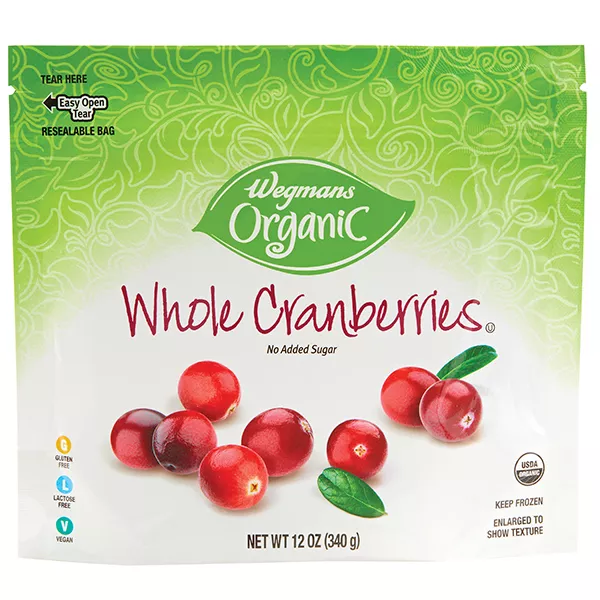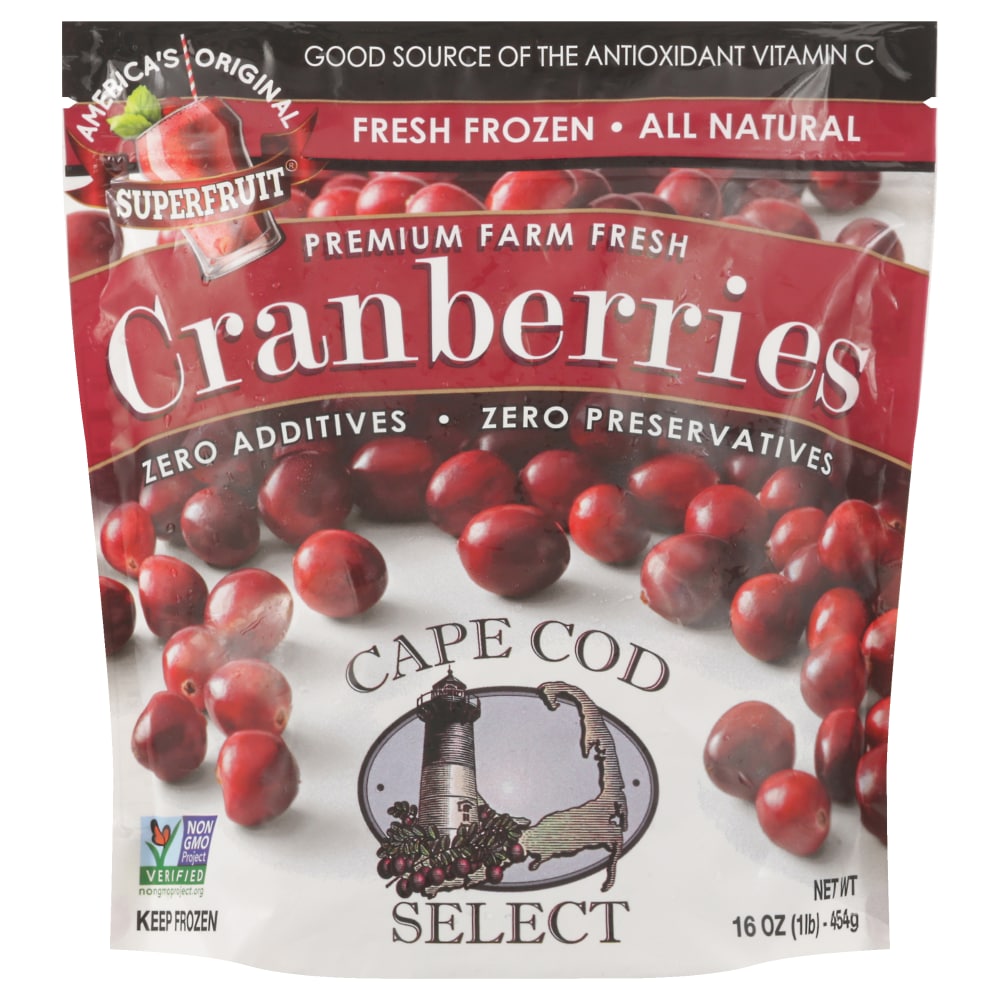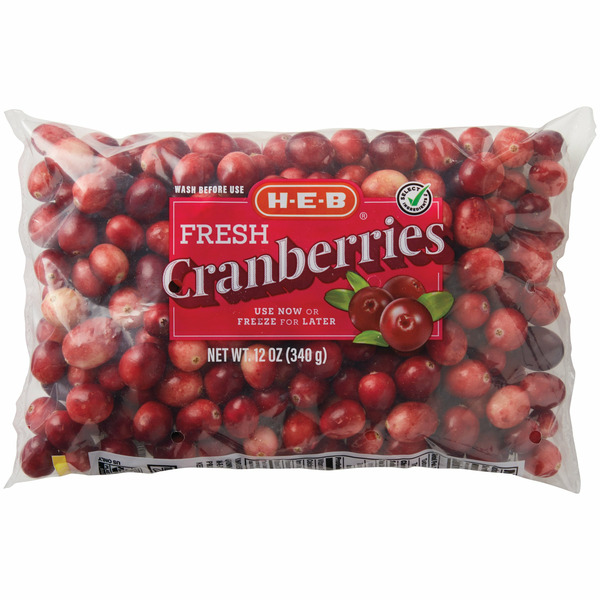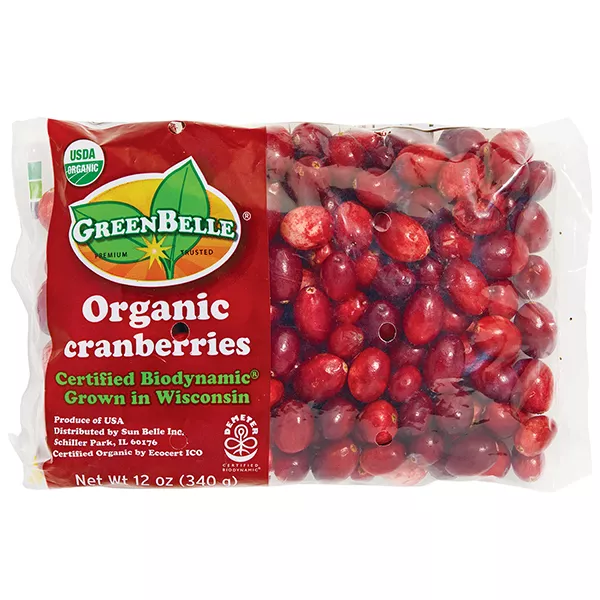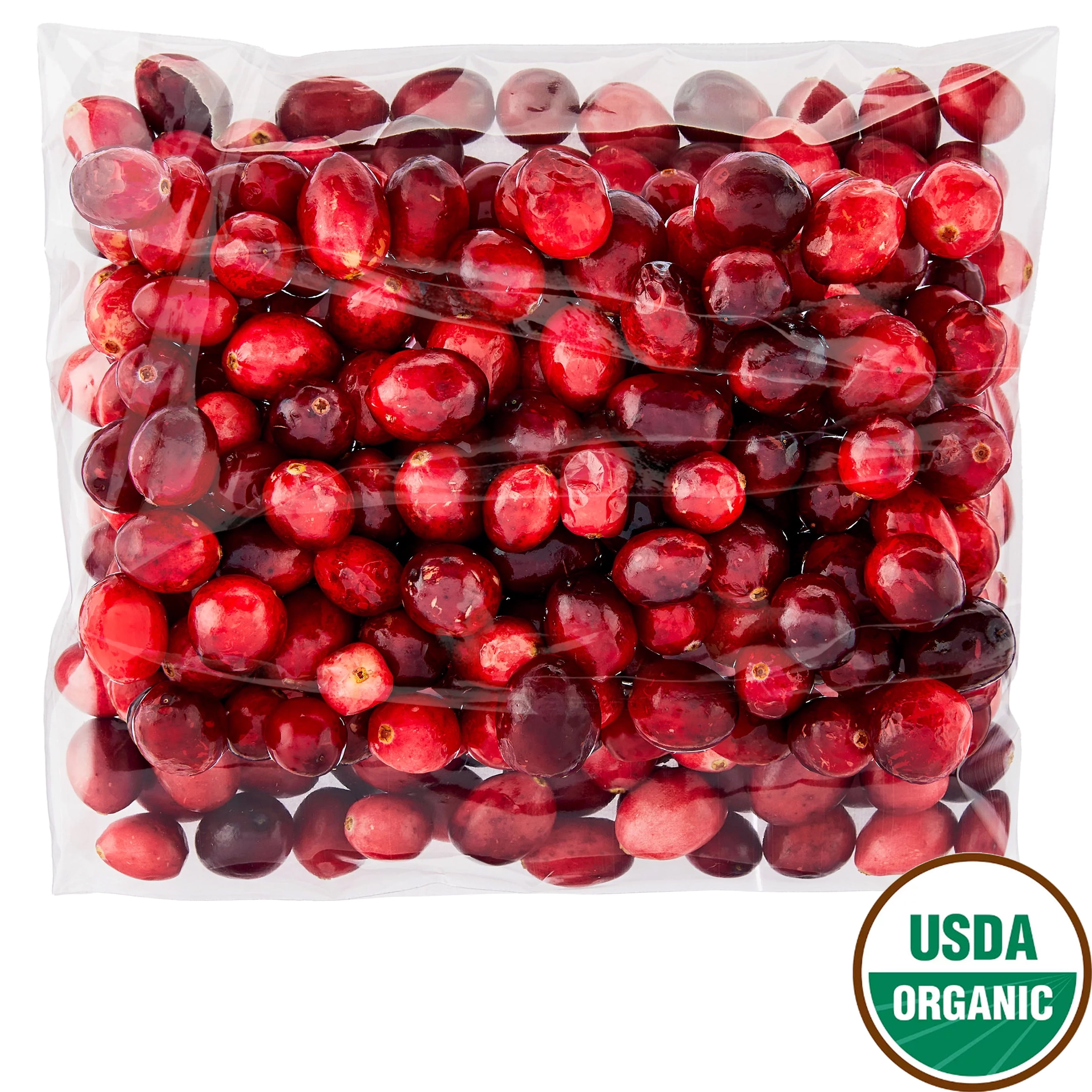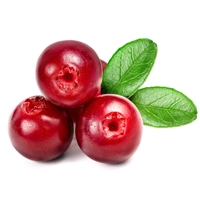DESSERTS
SIDE DISHES
SALADS
Cranberry
Cranberries are small, tart, bright red berries that grow on trailing vines primarily in cooler regions of North America. They are commonly harvested in the fall and are famous for their distinct tangy flavor and rich nutritional profile. Cranberries are a great source of antioxidants, Vitamin C, and fiber, providing numerous health benefits such as promoting heart health, supporting the immune system, and preventing urinary tract infections.
Cranberries can be consumed fresh, dried, or as juice, and are often used in baking, cooking, and making homemade sauces. One of the most popular uses for cranberries is in making cranberry sauce, which is commonly served as a condiment during Thanksgiving and Christmas holidays. They also pair well with other fruits, nuts, and spices and can provide a delightful burst of flavor when added to dishes like salads, bread, and desserts.
95%
CARBS
1%
FAT
4%
PROTEIN
529 Cranberry Products
Wegmans Organic Cranberries, Whole
Michigan Cranberry Co. Michigan Cranberry Co., Cranberries
Cape Cod Select Cranberries
Ocean Spray Fresh Premium Cranberries
H-E-B Fresh Cranberries
GreenBelle Organic Cranberries
Naturipe Organic Cranberries
Cranberries
Bluewater Farms Cranberries, Premium Fresh, All Natural, Bag
Cranberry
Used In 91 Recipes
6
Autumn-Spiced Chicken with Caramelized Apple and Cranberry Glaze
3
Festive Cranberry Chicken Stuffed Butternut Squash
1
Crunchy Triple-Deck Turkey Delight
1
Citrusy Cranberry Baked Brioche French Toast
2
Festive Black Walnut Cake
3
Citrusy Cranberry French Toast Casserole
3
Orange-Cranberry Loaf with Zesty Glaze
2
Orange Blossom Cranberry Sauce
Cranberry Is Frequently Used With
Cranberry FAQ
Cooking with cranberries can be a delightful experience as they bring in a unique combination of tart and sweet flavors. However, many people often wonder how to balance its tartness. The key to cooking with cranberries is to balance their natural tartness with sweetness, and spices can be a great help with that. Brown sugar, cinnamon, and nutmeg are all excellent spices to use with cranberries. On the other hand, people often overcook cranberries, which can evaporate their rich flavors and make them too mushy. The best approach is to cook them just until they burst to retain their flavor and texture. One less known tip about cranberries is that fresh cranberries freeze well. You can stock up during the fall harvest and use them direct from frozen in recipes throughout the year.
Why do people often pair cranberries with turkey?
Are cranberries supposed to be cooked?
How do you reduce the bitterness of cranberries?
Do I need to thaw frozen cranberries before cooking?
Can I eat raw cranberries?
What can I do with extra cranberries?
Can I substitute dried cranberries for fresh ones in recipes?
How do I know if cranberries are ripe?
Is cranberry juice as healthy as eating fresh cranberries?
Are cranberries good for my skin?
Expiration & Storage Tips
When does cranberry expire?
When unopened and kept in a cool, dark pantry, dried cranberries can last for about 12-18 months past their printed date. Once opened, it's best to consume them within 6 months for optimum freshness. Fresh cranberries, if stored in the refrigerator, can last for up to 20 days. If you've frozen cranberries, they can be stored for up to 12 months.
How do you tell if cranberry is bad?
If the berries have softened or shriveled, discolored, or developed a foul smell, it's a clear sign they've gone bad. Mold or a slimy texture can also indicate that cranberries are no longer safe to eat. Dried cranberries should be discarded if they have hardened and lost their chewiness or have developed an off odor.
Tips for storing cranberry to extend shelf life
• Fresh cranberries can be kept in their original packaging in the refrigerator. They tolerate lower temperatures well, so the crisper drawer is an ideal place.
• For longer shelf life, cranberries can be frozen. Just wash, dry, and spread them out on a baking tray to freeze before transferring to airtight bags or containers. This keeps them from sticking together.
• Dried cranberries should be stored in a cool, dark pantry in a tightly sealed container. Once opened, store them in the refrigerator to extend their shelf life.
• Cranberry juice should be stored in the refrigerator once it's open and consumed within two weeks.
EXPIRES WITHIN
3 - 6
WEEKS
Health Info
Macros
11g
CARBS
0g
FAT
0g
PROTEIN
Allowed on these diets
LOW FAT
HIGH CALCIUM
VEGETARIAN
KETO
PALEO
WHOLE 30
MEDITERRANEAN
LOW CARB
VEGAN
LACTOSE FREE
GLUTEN FREE

